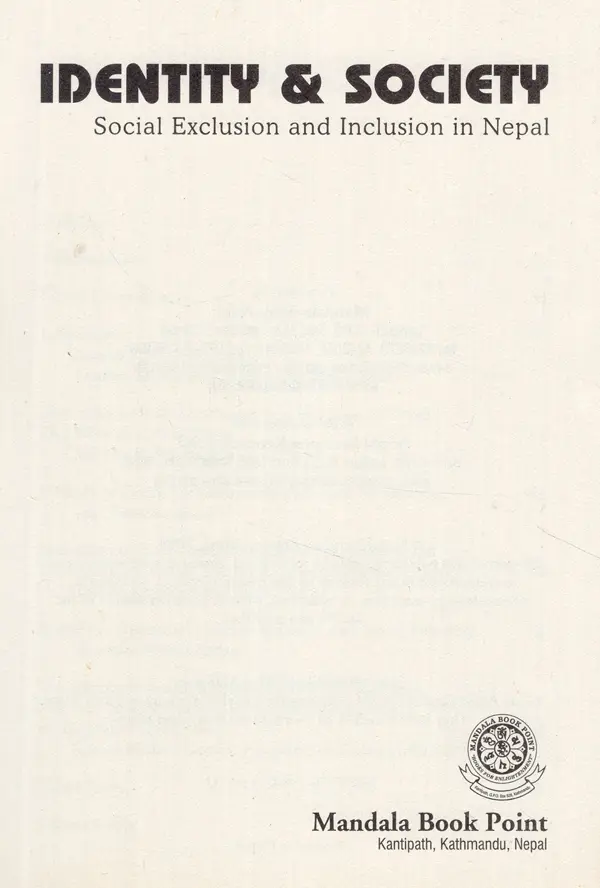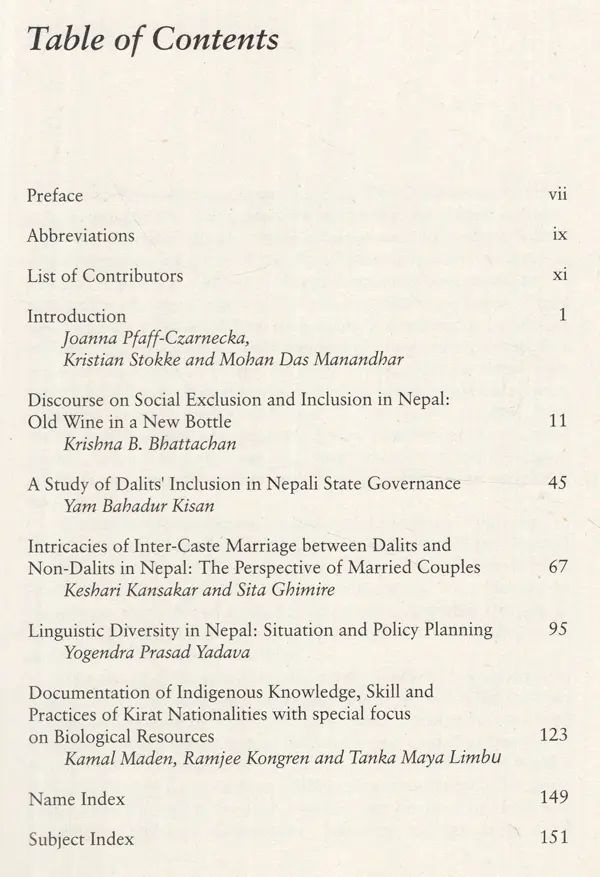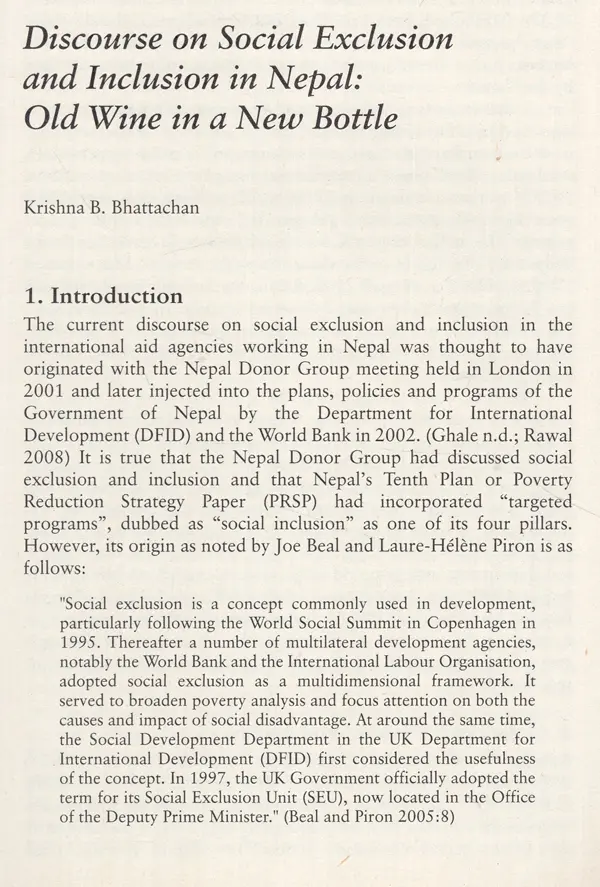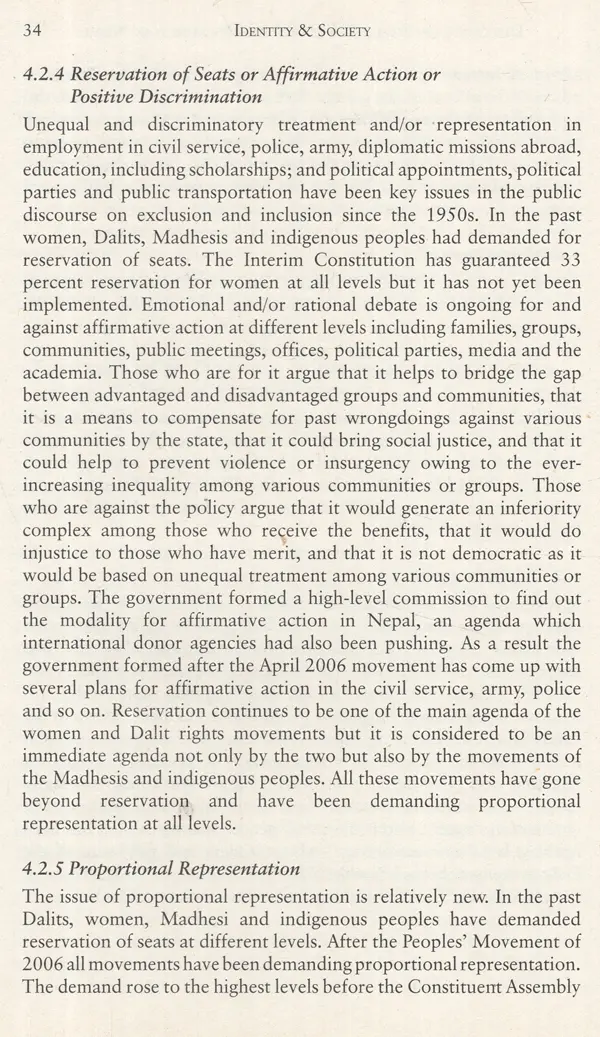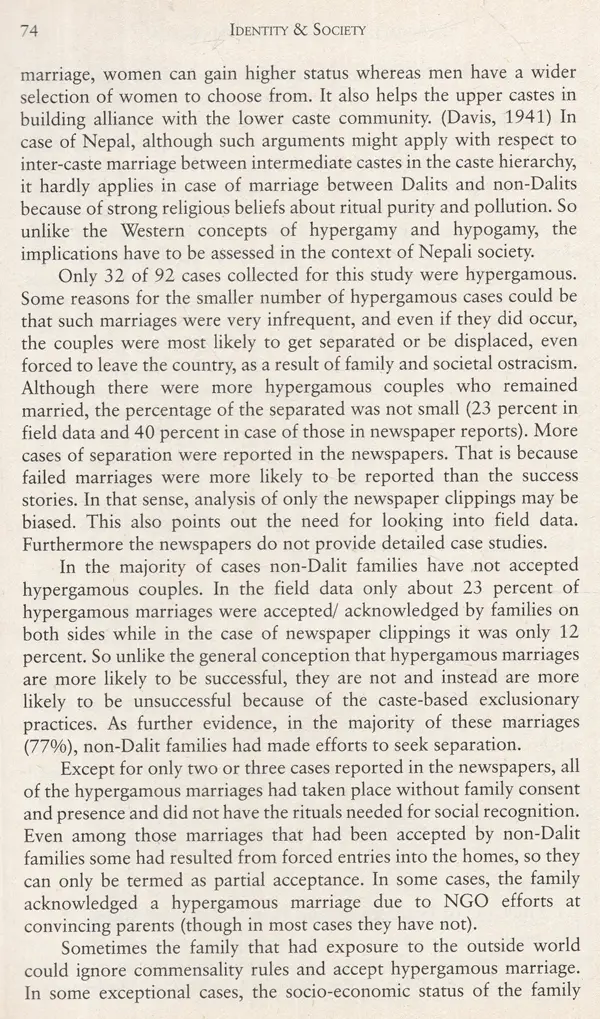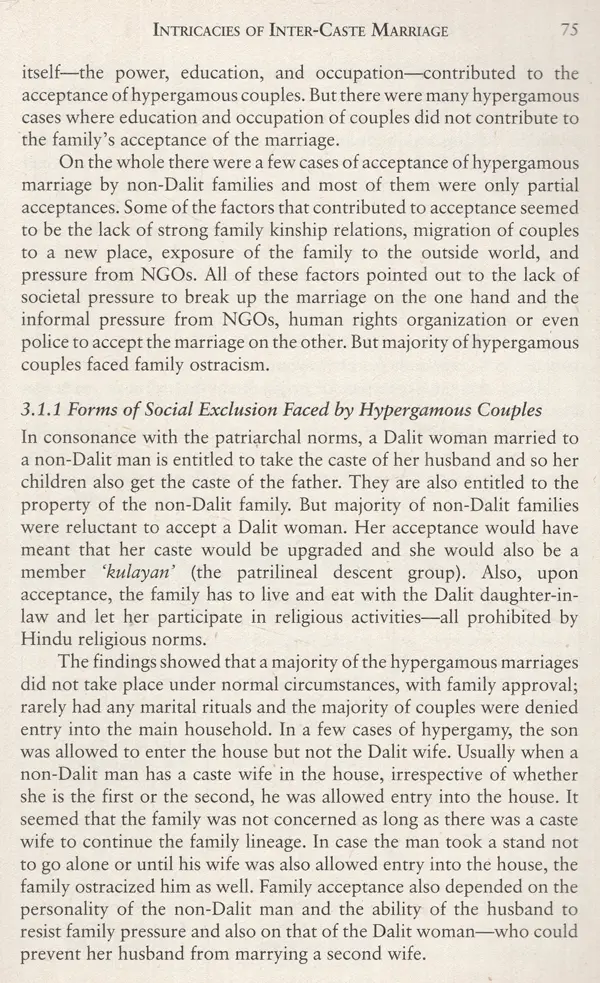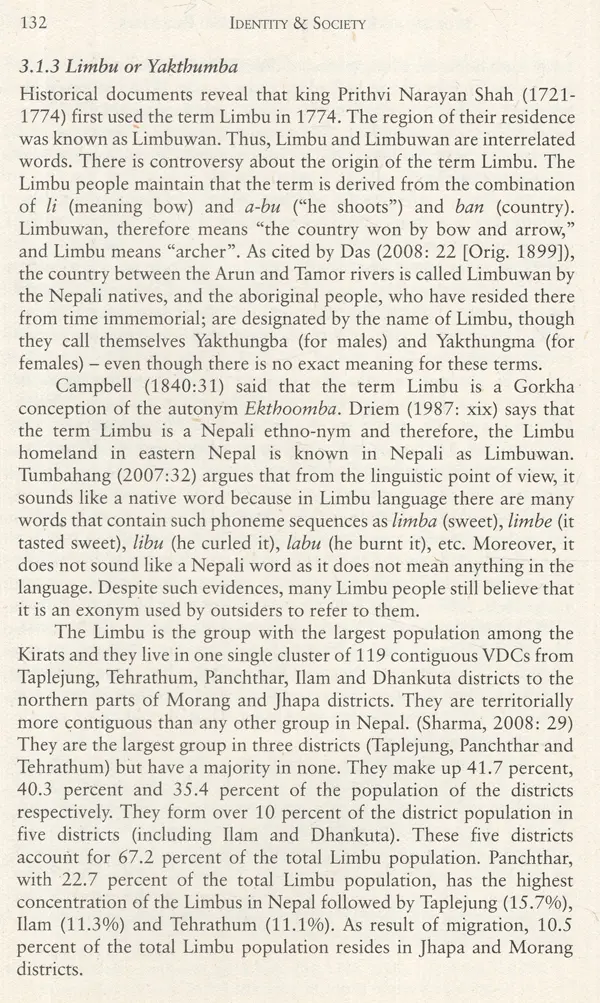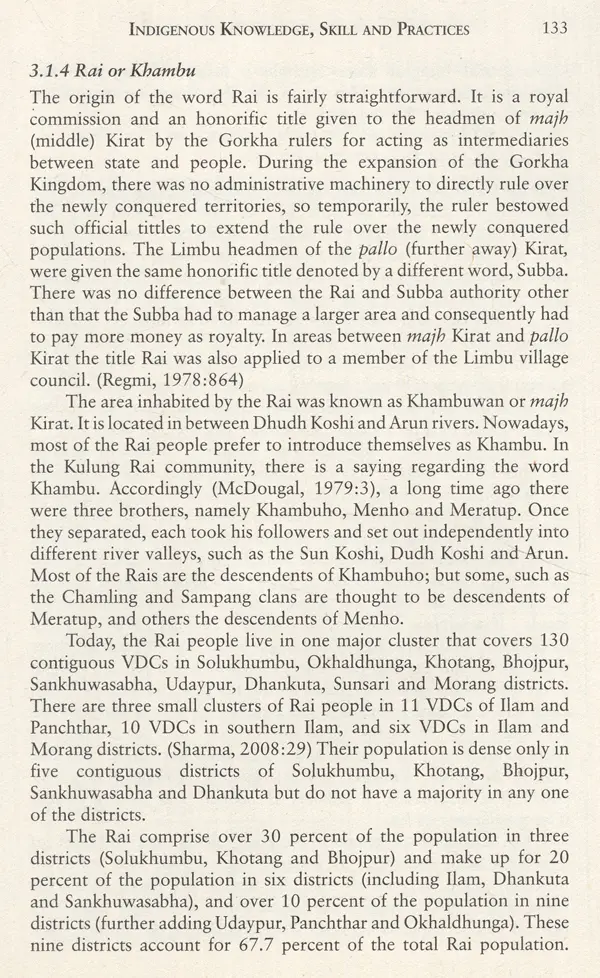
Identity & Society: Social Exclusion and Inclusion in Nepal
Book Specification
| Item Code: | UAU118 |
| Publisher: | Mandala Book Point, Nepal |
| Language: | English |
| Edition: | 2009 |
| ISBN: | 9789994655113 |
| Pages: | 167 |
| Cover: | PAPERBACK |
| Other Details | 8.50 X 5.50 inch |
| Weight | 230 gm |
Book Description
Nepal is at the crossroads of state building. The Constituent Assembly is now looking into the modalities of establishing a multi-cultural, multi-social, multi-linguistic, multi-religious and multi-ethnic federal state. Nepal has a history of social exclusion that stemmed from its political ideology as a Hindu moharchial state and also caused by the remoteness of certain parts of the country. Social exclusion occurs when a group is excluded from their rights or entitlements as citizens, including rights to attain a certain standard of living and to participation in society as equals. Members of many communities in Nepal were excluded from exercising their rights on the basis of their social identity - gender, caste, ethnicity and race. The exclusion resulted from discriminatory policies and violence against members of the excluded groups. As Dr. Harkha Gurung said, "State advocacy of Hindu religion relegates the Janajati, ethnics and other non-Hindus as peripheral subjects.
Social inclusion became a major political agenda following the armed insurgency launched by the Communist Party of Nepal (Maoist) in 1996. The 10-year-old conflict ended following a Comprehensive Peace Agreement signed by the government and the Maoists in November 2006. Nepal held the Constituent Assembly election in April 2008. The assembly is to prepare a new constitution for an inclusive, federal Republic of Nepal.
The Social Inclusion Research Fund (SIRF) was established in August 2005 for enabling Nepali scholars - mainly scholars from excluded communities-to research exclusion in Nepal and recommend changes. One key question that the Fund hoped to answer was "How to understand the structural inequalities of Nepali society to build a nation within the framework of a deliberative democracy?" The three year research program for state building was financed by the Royal Norwegian Embassy, Kathmandu, following an agreement with Government of Nepal. SNV Nepal was invited to manage the fund as its secretariat.
The research fellows began submitting their reports in early 2009. SIRF organised consultations on the research findings with a range of stakeholders, including political party leaders, Constituent Assembly members, and members of civil society, judiciary, media and development partners. This is the beginning of SIRF's efforts to publish some of the research reports for wider dissemination.
SIRF was fortunate to have Dr. Harka B Gurung, a well-known scholar as a chairperson of Interim Screening Committee (ISC) to lead the Fund. It was his leadership that provided a direction to the research activities. SIRF was also fortunate to get the support of Ingrid Ofstad, former Norwegian Ambassador to Nepal, without whose efforts it would have been very difficult to initiate SIRF. The Fund was also endorsed fully by Dr. Shanker Sharma, former Vice Chairperson of the National Planning Commission, Government of Nepal and Jan de Witte, former Director of SNV Nepal. The members of the ISC were also instrumental in getting the Fund off the ground and guide it as the research progressed.
1. Social Exclusion and Inclusion
The term social exclusion, which originated in France in 1974, is linked to literature on the social division and inequality in Europe of the 1950s and 1960s. The texts reflected the state of society and efforts and demands for ending inequality and emancipating the poor and disadvantaged sections of society who lacked adequate resources to attain acceptable standards of wellbeing and the participation in the activities of society. (Silver. 1995 and Muddiman. 1999) Social exclusion that exists in South Asian societies predates the discourse in Europe and is quite distinct from that seen in many other societies. (Sen, 2000, Viitanen, 2000 and Sheth, 2004) The distinctiveness has resulted from stratification based on caste, ethnicity and racism that prevailed, in one form or other, in South Asia for centuries and developed the social and cultural systems that excluded certain communities from common facilities or benefits. Further, according to Brass (2005), caste, ethnicity and racism are political phenomena which also apply in South Asia. Therefore, irrespective of whether or not the socio culture vis-à-vis language and identity is ancient or newly-fashioned, the discourse of caste, ethnicity, racism and nationality is in large part the discourse of politically-induced cultural change.The concept of social exclusion in France, which was later adopted by other European countries, focused on the exclusion then prevailing in Europe and how that affected individual rights and the resulting social disadvantages and tensions. The understanding of social exclusion is also about inclusion as both represent two sides of the same coin. Many believe that social inclusion is a solution to exclusion. However, the two could exist simultaneously because an individual or a group could be excluded in one domain and included in another. For instance, a society may accept inter-caste marriage but reject the membership of the couples in different social groups. Therefore, the conceptualization process of social inclusion and exclusion should address to all the complexities of behaviours and practices in society in terms of exclusion and inclusion.
Caste, ethnicity and racism based-social exclusion can be defined, more appropriately, in terms of how states are structured and how they have maintained the relations of power and difference among different communities and groups and how it has sought (and seeks) to legitimize these power relations. This could take place by (1) systematically dispensing various mixes of economic and cultural assets/opportunities and deprivations to different communities, and (ii) by endowing religious and ideological sanctification of such dispensations.
South Asian societies comprise of innumerable caste, ethnic, racial and cultural groups that are distinct and were (and are) held together through local hierarchy networks, structural state processes and the hegemony of social groups with so-called superior status. For ages, the communities were arranged and structured normatively and uniformly in an unequal macro-system of graded exclusion supported by political, economical and knowledge-based domination by a few communities. The hierarchical structures based on a religion/class dispensed economic/cultural rewards only to elite communities and groups in South Asia. The special nature of exclusion in the South Asian societies can be grasped by understanding the caste, ethnicity, race and cultural diversity in terms of its historical character: i.e. religion-based power structure rather than just a hierarchy that has been reproduced over time.
Book's Contents and Sample Pages
